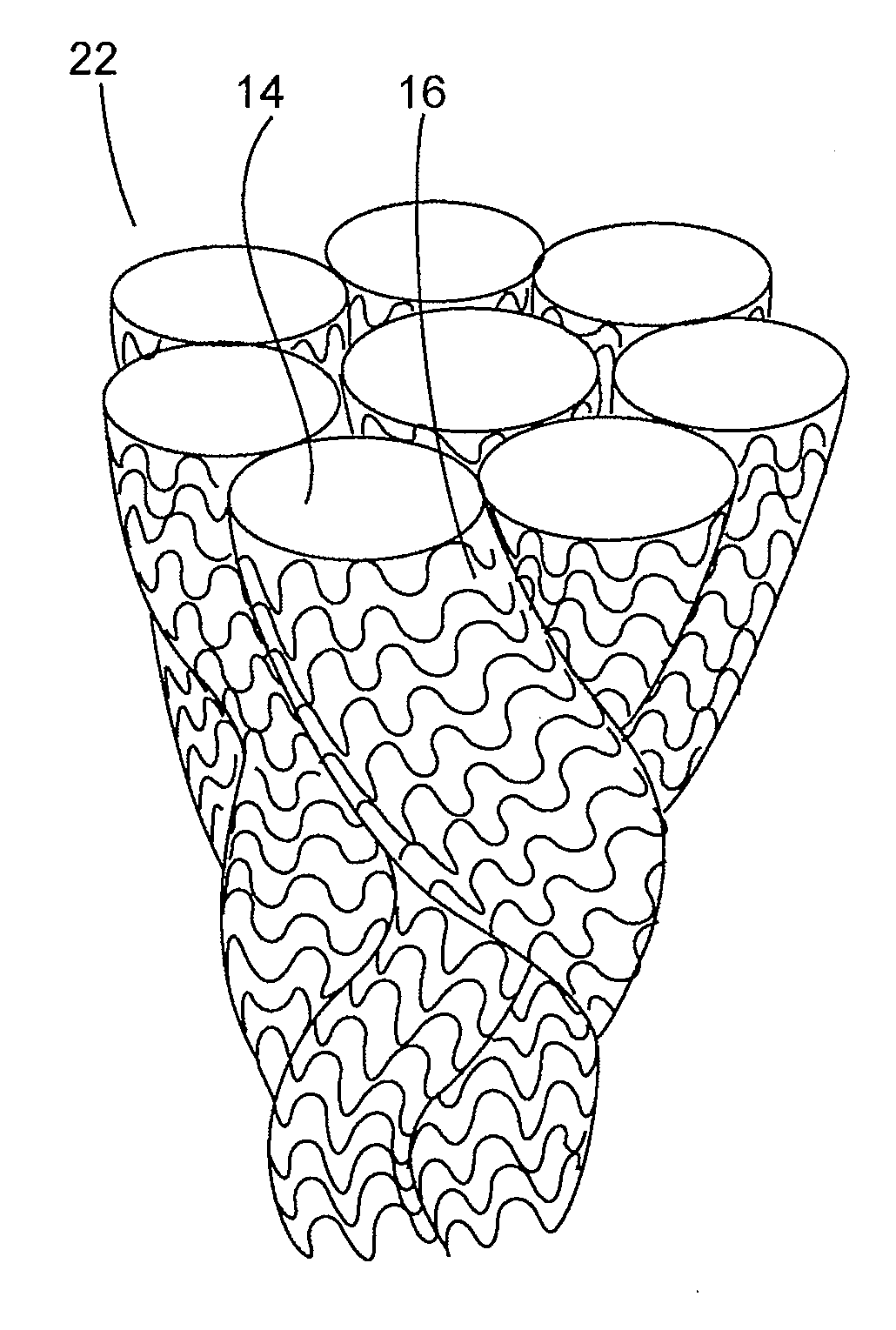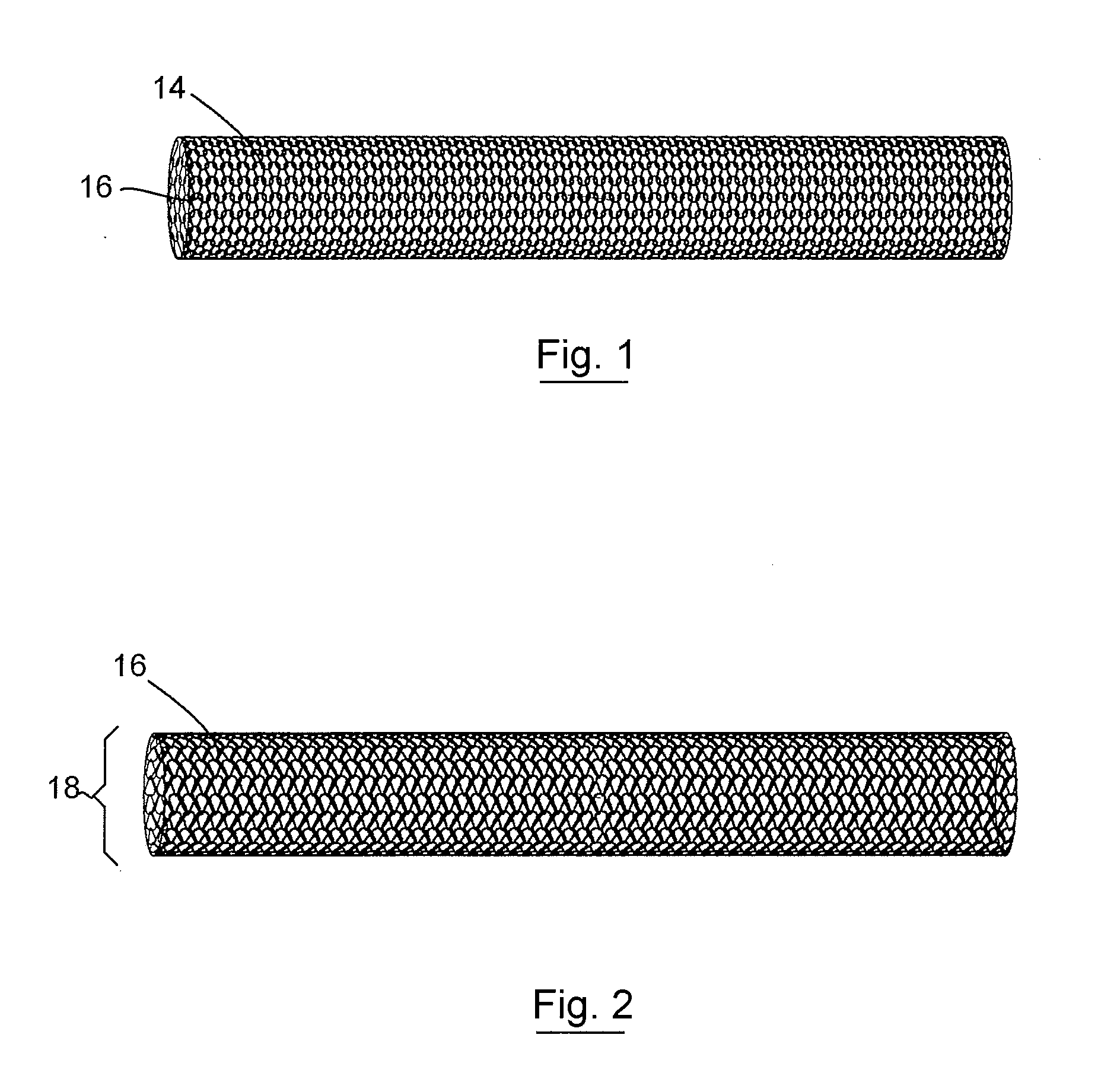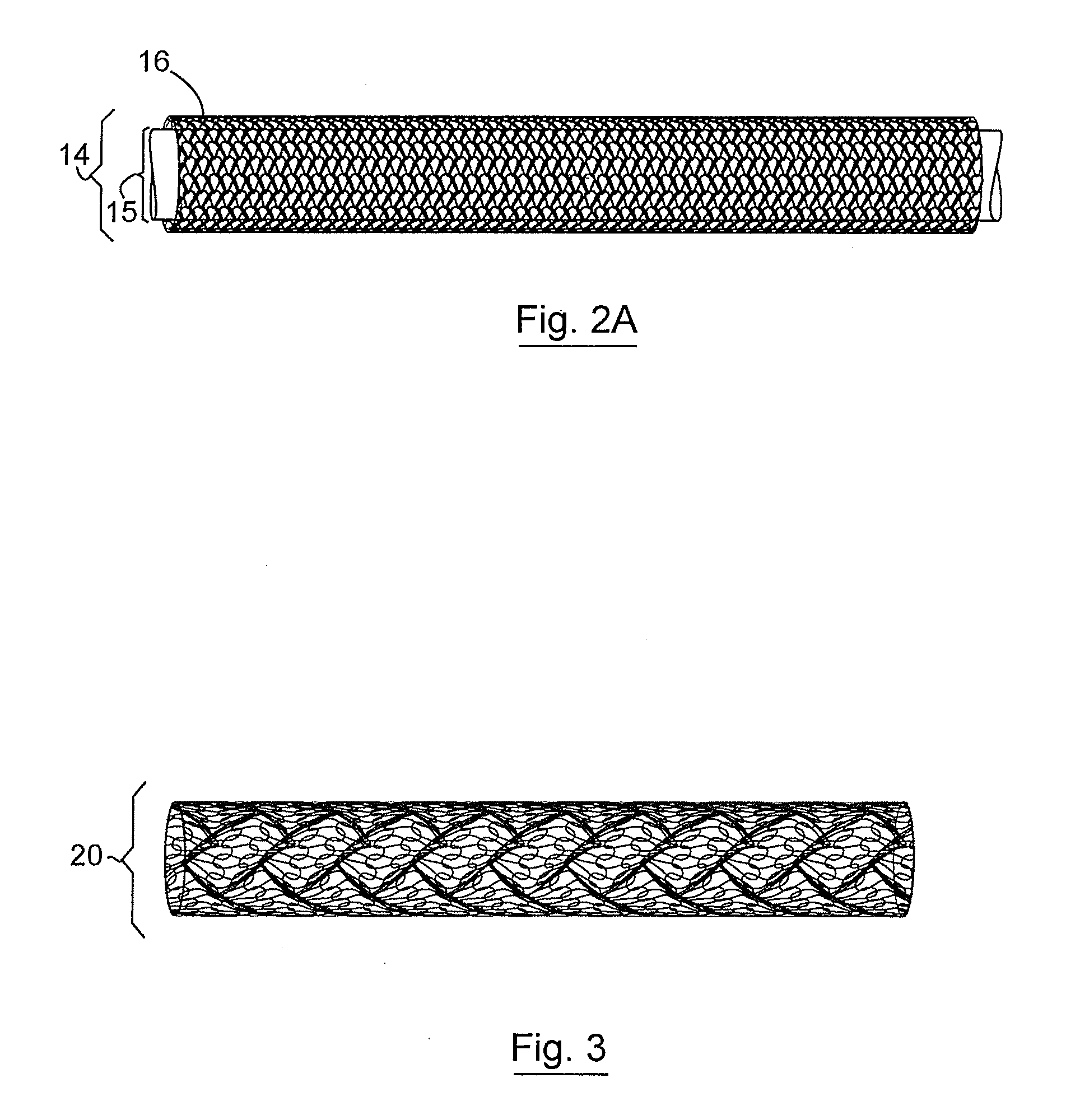Three Dimensional Implant
a three-dimensional, implant technology, applied in the field of medical devices, can solve the problems of unsatisfactory implants, prone to migration of implants, disadvantages of one or more implants presently used, etc., and achieve the effects of low density, low weight:volume ratio, and convenient surgical procedur
- Summary
- Abstract
- Description
- Claims
- Application Information
AI Technical Summary
Benefits of technology
Problems solved by technology
Method used
Image
Examples
example
Example 1
[0082]A three-dimensional non-woven soft tissue implant was constructed using a biaxially-oriented polymer film. The film is stretched in both the machine and transverse directions (relative to the extrusion direction) to orient the polymer chains. The stretching process can take place simultaneously or sequentially depending on the equipment that is available. The base film was Syncarta™ (AET Films, Peabody, Mass.). The base film was machined into Mesh Design 3 (“Mesh3”) using a 3.0-Watt Avia Q-switched Ultraviolet Laser produced by Coherent, Inc. (Santa Clara, Calif.). The design of a cell for the non-woven soft tissue implant is shown in FIG. 9C. The soft tissue implant was cut into circular disks and triangular supports used to construct a three-dimensional implant. The calculation for the surface area for the components used to construct the three-dimensional implant is shown in FIG. 9D.
[0083]Vimplant×((II(Limplant)(Rimplant)2) / 3 where Vimplant is the volume of the con...
PUM
| Property | Measurement | Unit |
|---|---|---|
| diameter | aaaaa | aaaaa |
| volume ratio | aaaaa | aaaaa |
| volume ratio | aaaaa | aaaaa |
Abstract
Description
Claims
Application Information
 Login to View More
Login to View More - R&D
- Intellectual Property
- Life Sciences
- Materials
- Tech Scout
- Unparalleled Data Quality
- Higher Quality Content
- 60% Fewer Hallucinations
Browse by: Latest US Patents, China's latest patents, Technical Efficacy Thesaurus, Application Domain, Technology Topic, Popular Technical Reports.
© 2025 PatSnap. All rights reserved.Legal|Privacy policy|Modern Slavery Act Transparency Statement|Sitemap|About US| Contact US: help@patsnap.com



